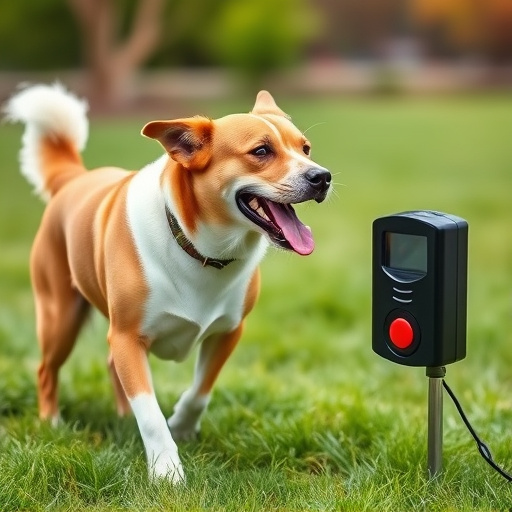Handheld sonic bark control devices offer a flexible alternative to stationary repellents for managing dog barking in various settings. While stationary options provide consistent protection in confined spaces, mobile devices allow users to control barking from a distance with adjustable ultrasonic tones. This Stationary Vs Mobile Dog Repellent Comparison reveals that handheld devices excel for outdoor use and diverse situations, while stationary repellents are ideal for specific areas like backyards. Informed decisions can be made based on effectiveness, ease of use, and cost, ensuring the best fit for individual needs.
“Discover the power of sound as a tool for canine control with handheld sonic bark devices. This comprehensive guide explores the world of stationary and mobile dog repellent solutions, offering a unique approach to addressing unwanted barking.
We’ll delve into the mechanics of these devices, comparing stationary and mobile options. Stationary repellents have their merits, but mobile devices provide flexibility. Understanding their workings and effects is key to an effective strategy in any setting.
Uncover the pros and cons, and make an informed choice with our detailed Stationary vs. Mobile Dog Repellent Comparison.”
- Understanding Handheld Sonic Bark Control Devices: How They Work
- Stationary Dog Repellents: Advantages and Disadvantages
- Mobile Dog Repellent Devices: On-the-Go Solutions and Their Effectiveness Comparison
Understanding Handheld Sonic Bark Control Devices: How They Work
Handheld sonic bark control devices operate by emitting high-frequency sound waves that are designed to be irritating to dogs, effectively deterring them from barking excessively. Unlike traditional, stationary dog repellents, these mobile devices offer a hands-free and versatile approach to managing canine behavior. When activated, the device projects an ultrasonic tone that is inaudible to humans but can prompt a dog to stop barking.
The key advantage of handheld sonic bark control devices lies in their comparability to stationary options. While stationary repellents are effective in confined spaces or specific areas, mobile devices allow users to move freely and target problematic barking from various distances. This flexibility makes them ideal for multi-faceted applications, whether in parks, public spaces, or even at home. Additionally, these devices often come with adjustable settings, allowing users to tailor the intensity of the sound wave projection based on the situation and sensitivity of their pets.
Stationary Dog Repellents: Advantages and Disadvantages
Stationary dog repellents have been a traditional method of keeping canines at bay, especially in areas where dogs are not welcome. These devices typically use strong odors or sounds to deter dogs from entering specific zones. The main advantage lies in their consistency; they provide a reliable and continuous barrier against unwanted canine visits, making them ideal for securing backyards or public spaces. However, they have limitations, such as being restricted to one location, which might not be suitable for mobile situations or areas requiring flexibility.
In contrast, handheld sonic bark control devices offer a more dynamic approach. These portable tools emit high-frequency sounds that are inaudible to humans but irritating to dogs, encouraging them to leave the area. Their mobility allows users to adjust and control the environment according to their needs, making them excellent for outdoor activities or managing dog presence in various settings. This comparison highlights the trade-off between consistency and flexibility, where stationary repellents excel in established spaces, while handheld devices provide a more versatile solution for dynamic environments.
Mobile Dog Repellent Devices: On-the-Go Solutions and Their Effectiveness Comparison
In this comprehensive overview, we’ve explored the different types of dog bark control devices, focusing on a stationary vs mobile comparison. Handheld sonic bark control devices offer a non-lethal and effective solution for managing excessive dog barking. While stationary repellents have their advantages, like consistent placement, mobile devices provide versatility for on-the-go training and travel. When choosing the best option, consider your specific needs, lifestyle, and the behavior of your canine companion. Remember, a combination of positive reinforcement and appropriate training techniques can significantly improve barking issues.
